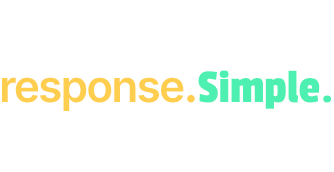Drafting a Response to a Cease and Desist Letter

Drafting a Response to a Cease and Desist Letter
Introduction
Receiving a cease and desist letter can be a daunting experience. Your response can greatly affect the outcome. So, reply with care. This article helps you draft a response to a cease and desist letter. Highlighting key steps and tips to tackle this challenge.
Understanding the Cease and Desist Letter
The first step in drafting a response is to read the cease and desist letter. Understand the specific allegations against you. This includes what activity to stop and the legal basis for the claims. This is key for crafting an effective response. They often say you breached intellectual property. It will also sometimes claim for breaches of contract. They also claim other legal violations. Knowing the claim's nature will help you decide if you need to act now.
A cease and desist letter is not a formal lawsuit. It is a warning that legal action may follow if you do not comply. Knowing this can ease some initial fears and help you proceed.
With response.Simple., you can quickly generate a response to these letters. Allowing you to respond within the required timeline.
Assessing the Allegations
Next, critically evaluate the allegations being made. Do they have any merit based on your activities and the applicable laws? This assessment will inform your response strategy. If you're unsure about the claims, gather documents and evidence. They may clarify the situation. Ask yourself the following questions:
- Are the claims valid?
- Do you have any documents that could refute the allegations?
- Is there a misunderstanding or error in the claims made?
A careful review of these factors will help you decide. You can comply, negotiate, or contest the claims. If the claims seem baseless or exaggerated, say that firmly.
response.Simple. can guide you in reviewing the letter you received. But, you need to gather your documents to assess the allegations fully.
Determining Your Response Strategy
Once you understand their claims; you need to decide on a response strategy. Your options may include:
- Complying: If their claims are valid, do you want to comply fully with the demands? This may mean stopping some activities or removing infringing content. Or, it may require taking other steps.
- Negotiation: If the claims are partly true, but the demands are unreasonable, consider negotiating. A proposal for a compromise can help resolve the matter. It may avoid further legal escalation. But it may take several letters to reach a settlement.
- Defense: If you believe the claims are wrong, you can respond with a defense. This means to show why the claims are wrong and provide any proof you have. A strong defense may deter the sender from acting further.
response.Simple. can help you choose the right strategy. It can also help you draft a fitting response to match your response strategy.
Components of a Response Letter
A good response letter can greatly affect how things progress. Here are some key components that should be included:
- Acknowledgment: Acknowledge receipt of the cease and desist letter. This shows that you are aware of the issue and are taking it seriously.
- Your Position: Clearly state your stance on the claims. Do you dispute the claims, partially agree, or fully comply? Be concise but specific.
- Supporting Arguments: Include evidence or arguments that back your position. Include contracts, emails, or other documents that support your case.
- Next Steps: State your next actions. If you’re complying, outline how you will do so. If you contest the claims, say you're open to a negotiation.
response.Simple. will ensure your letter includes all those parts. It will be clear, concise, and professional.
Professionalism
Your response must be legally sound. Address all points in the cease and desist letter. Support your arguments with facts. Be careful. Don't admit or concede anything that could be used against you later.
If disputing the claims, be respectful and professional. Avoid using insults that can escalate the conflict.
response.Simple. maintains professionalism and accuracy for you. Every letter is based on correspondence from by our legal team. Our letters resolve matters, not complicate them more.
Sending Your Response
Once your response letter is ready, send it. Many cease and desist letters set a deadline for response. Missing it could lead to legal action. Sending your response via email or certified mail is a good idea. It establishes a record of your communication.
Be professional, even if you disagree with their claims. A respectful, well-crafted letter can prevent escalation. It shows your wish to resolve the matter.
With response.Simple,. your letter will be done quickly and to a professional standard. We don't send the letters for you. But, we guide you to make sure they're ready for delivery in the best way.
Monitoring and Follow-Up
After you respond, monitor for more messages from the sender of the cease and desist letter. Be ready to negotiate over several letters. Keep detailed records of all correspondence. Document any actions you take to comply with or refute the claims.
In some cases, your response may prompt a discussion or even lead to a settlement. Being organized and ready can help you stay ahead.
response.Simple. helps you draft replies to all follow-up letters. It gives a clear overview of your next steps. Making it easier to manage future communications.
Conclusion
A cease and desist letter requires a careful and strategic response. A good response can help resolve the dispute. It may avoid costly legal battles. Choose to comply, negotiate, or dispute the claims. In all cases, professionalism and clarity are key.
Remember, response.Simple. can help you draft a strong reply. Protecting your interests without the stress and high costs of traditional lawyers. Our platform will ensure your response is structured, timely, and tailored to your situation.
Take control of your response today with response.Simple. We can help you face legal challenges, without the stress and high costs.
Next Blog Post:
